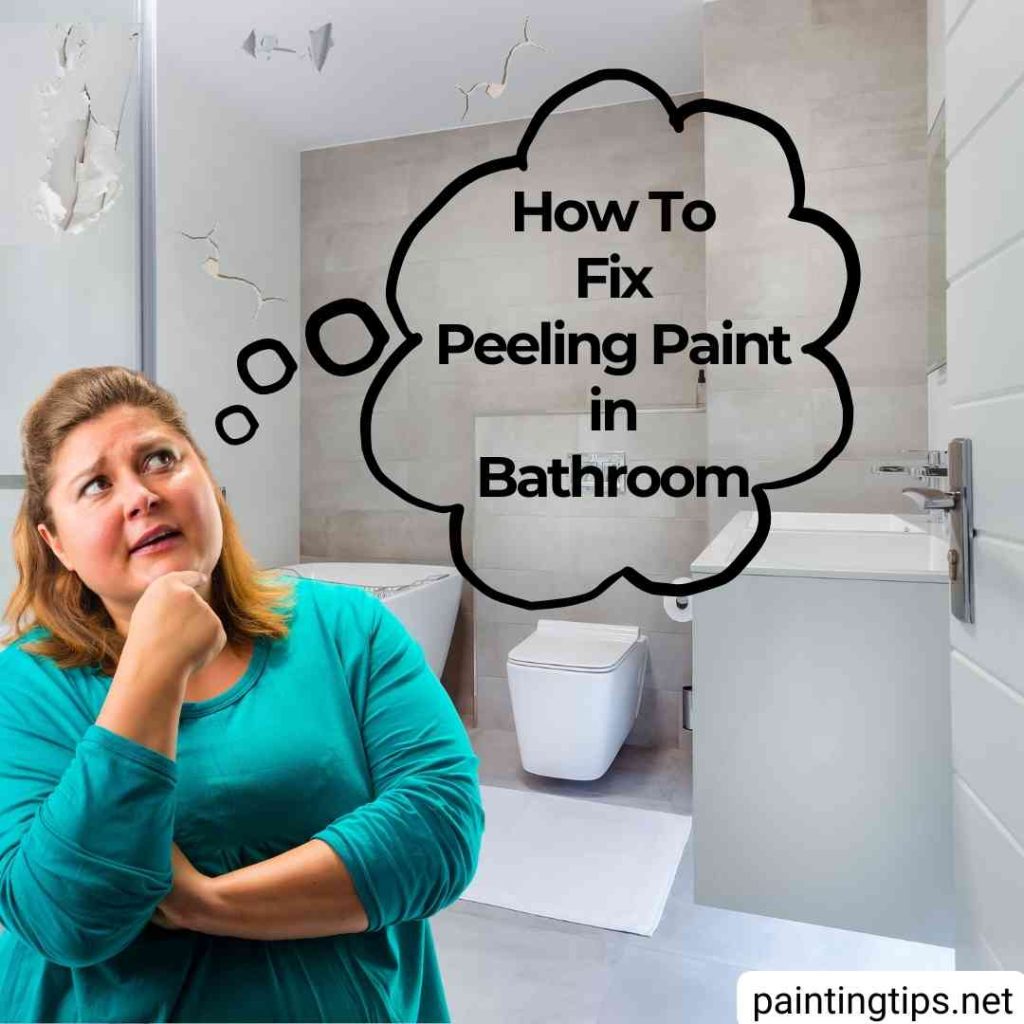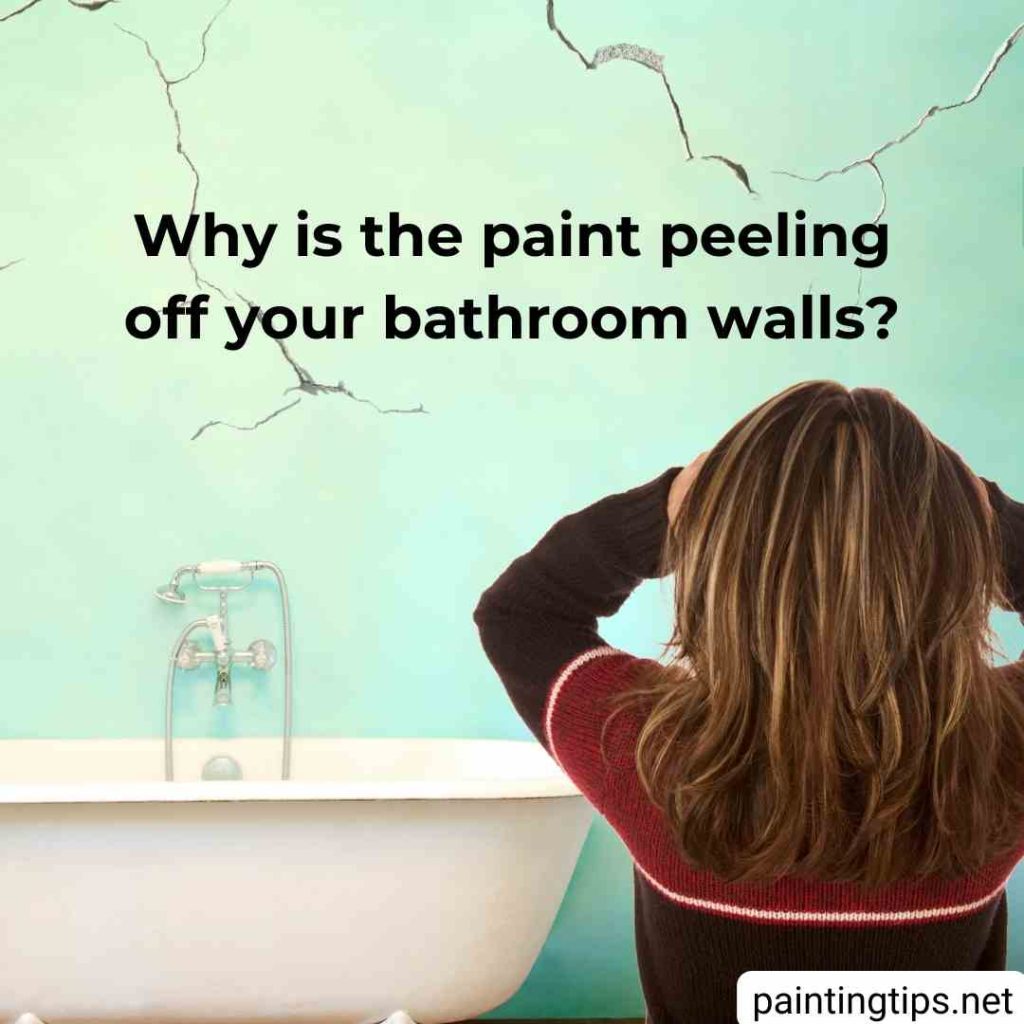Peeling paint in the bathroom can be an eyesore and a sign of underlying issues like moisture buildup or improper paint selection. If you’re dealing with this problem, it’s essential to address both the cause and the fix to prevent it from happening again. Fortunately, with the right approach, you can restore your bathroom walls and ceiling to their original condition. In this guide, we’ll walk you through the steps to repair and repaint peeling paint in your bathroom, along with tips on how to prevent it from reoccurring in the future.
How to Fix Peeling Paint in Bathroom

If the peeling paint in the bathroom has increased enough to bother you, you may want to intervene to prevent it from happening again. It is possible to restore the bathroom walls to their former beautiful appearance by repairing and repainting. However, repairing and painting the bathroom walls is slightly different from repairing the walls of the other rooms in the house because the plaster and paint on the bathroom walls are constantly exposed to hot steam.
We have practical advice for you to repair and repaint the peeling paint of the bathroom. But first, let’s explain the causes of peeling bathroom paint. So you can take measures to prevent the bathroom walls from peeling again.”Related article: Bath tub paint peeling.”
Why the Bathroom Paint Peels?

Bathroom walls are constantly exposed to hot moisture, unlike rooms in other parts of the house. The steam generated during showers should be properly ventilated to prevent damage. If the moisture isn’t expelled, it weakens the bathroom plaster over time, leading to the paint peeling off. Additionally, excess moisture can cause mold growth at the bottom of the walls and along joints, which poses significant health risks.
Another reason for peeling paint is using the wrong type of paint. In bathrooms, the walls need to absorb steam to prevent moisture buildup. However, synthetic paints and those with silicone or Teflon additives reduce the wall’s ability to absorb vapor. This leads to moisture accumulating on the surface of the walls, causing the paint to peel.
Poor-quality paint is another major factor in paint failure, especially in bathrooms. While low-quality paints can be problematic in any part of the house, their negative effects are more pronounced in damp environments like bathrooms. This results in the paint peeling off more quickly, making it essential to use high-quality, moisture-resistant paints for bathroom walls.
How to Fix Peeling Paint in Bathroom

1-Determine the Extent of The Damage
Before you start repairing the peeling wall in the bathroom, determine how bad the situation is. You should check whether only the paint is peeling or the plaster of the ceiling and walls is damaged. So you can apply the correct repair method.
Rub a metal spatula against the bathroom wall where the paint is peeling and tap the end lightly against the wall. If the plaster has problems, it will start to fall off when you hit it. If the application of the wall and ceiling is flaking, you should break the remaining weak parts and plaster again.
2-Sand the Ceiling
Remove peeling paint by sanding. You can use a sponge plaster sander. If the sponge sander cannot remove all the paint, you may need a sanding machine. Remember to wear a dust mask and goggles when sanding.
3-Clean Moulds
The warm humidity on bathroom walls causes both peeling paint and mold growth. Before priming and repainting the bathroom walls, remove the mold with a mold remover spray. Otherwise, new mold will also grow on the paint. Related article: How to clean walls without leaving streaks?
4-Use Primer Paint
The primer you should use on peeling bathroom walls and ceilings should be a thin water-based primer. This way, the paint layer will not thicken and will have better air permeability. It would help to use transparent plaster surface primers suitable for absorbent surfaces on peeling bathroom walls.
5-Paint the Bathroom Wall and Ceiling
For peeling bathroom walls, you should use paints with as few additives and filler-free paints as possible. Silicone and Teflon-free paints are the most suitable paints for bathrooms. Non-washable paints have less chemical content. In this way, air permeability becomes more. Related article: Best paint color for a small bathroom.
6-Use The Right Dye
In some countries and regions, special ceiling paints are offered for sale. Ceiling paints are one of the most air-permeable paints. If you cannot obtain ceiling paints, you should use non-washable paints and paints with low chemical additives, Teflon (PTFE), and silicone-free paints.
In addition, special paints that prevent moisture mold growth are also excellent measures to avoid the peeling of bathroom paints. Never use synthetic and synthetic enamel paints for bathroom ceilings and walls.
7-Use an Exhaust Fan
Use an exhaust fan to remove hot steam from the bathroom quickly. If your bathroom already has an exhaust fan, buy a more powerful one or install a second one.
8-Open The Bathroom Door and Window After Showering
Open the window and door to allow air circulation. Leave the bathroom window and door open for half an hour after showering. This allows air to circulate and the hot steam to escape without damaging the plaster and paint on the wall.
9-Use Anti-moisture and Anti-Mold Paints
To prevent peeling paint in your bathroom, you can use anti-moisture wall paints on the walls and ceiling of the bathroom after making all repairs and taking precautions. Thus, you will minimize the risk of peeling bathroom walls.
Does Peeling Paint in Bathroom Mean Mold?
No, peeling paint in the bathroom does not always mean mold. However there is a risk of mold growth in the future. For this reason, you should paint the bathroom walls with water-based paints and allow the steam to escape with an exhaust fan.
Does Peeling Paint Mean Water Damage?
The peeling paint in the bathroom indicates that moisture has lingered on the wall surface for a long time. It can also be an indicator of a plumbing leak. If you live in the attic, the water from the roof leaking onto the walls can also cause the paint to peel.
Can Humidity Cause Paint to Peel?
Yes, one of the causes of peeling paint on walls and ceilings is moisture. In addition, the poor quality of the paint, improper application, and the wrong type of paint selection cause the paint to peel.
Can I Paint Over Peeling Paint?
We do not recommend painting over peeling paint. Peeling dried paint chips will stick to the paint roller. In addition, if you do not repair the wall surface with peeling paint, all other paint applied to the surface will also peel.
What is The Best Paint for Moisture in a Bathroom?
Auxiliaries such as silicone and Teflon (PTFE) in some washable paints can reduce air permeability. For this reason, matt and non-washable paints are the best paints for moisture on bathroom walls. You can also use specially produced paints to prevent dampness and mold. We do not recommend using standard wall paints that you use in other rooms of the house in the bathroom.